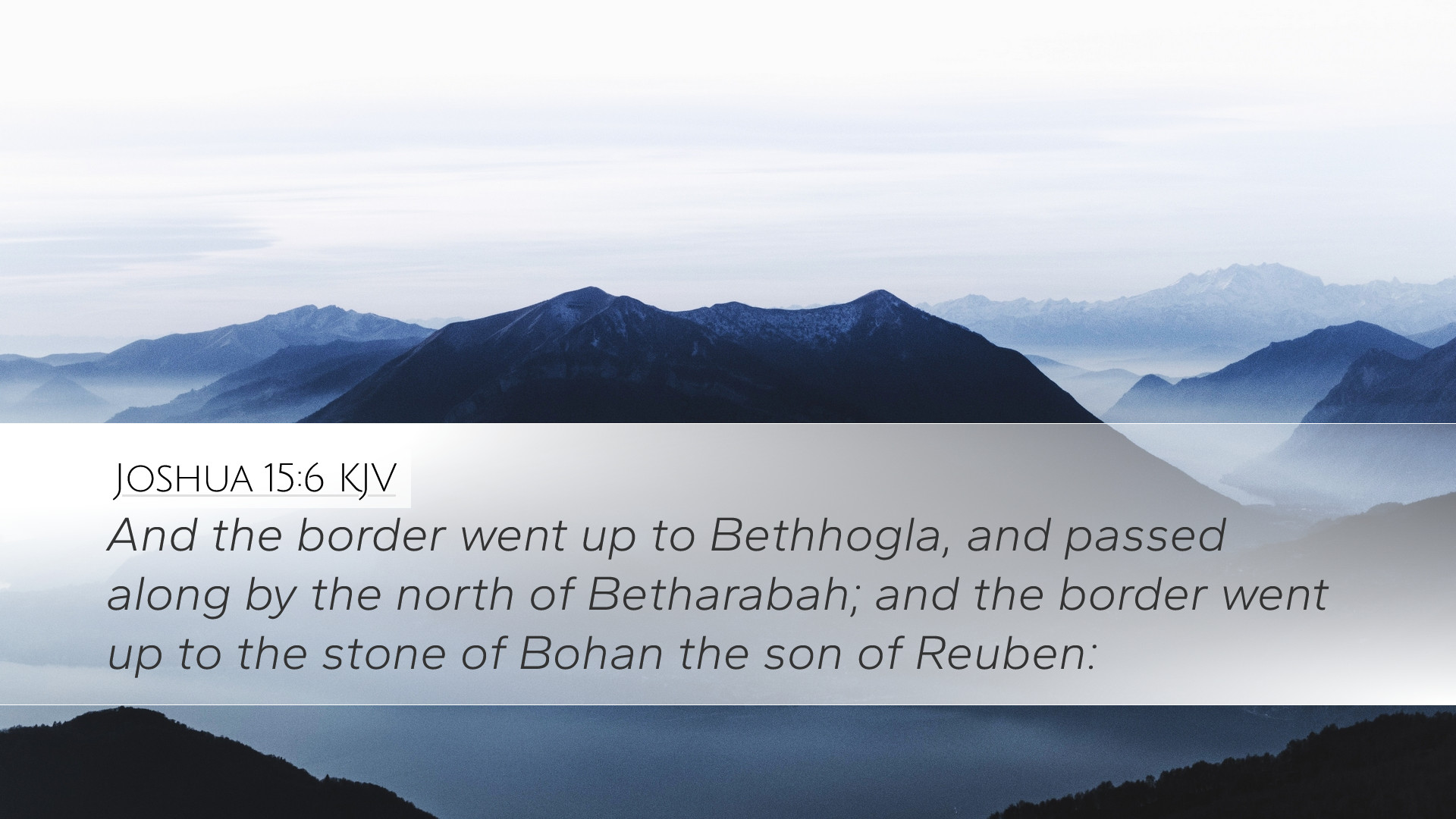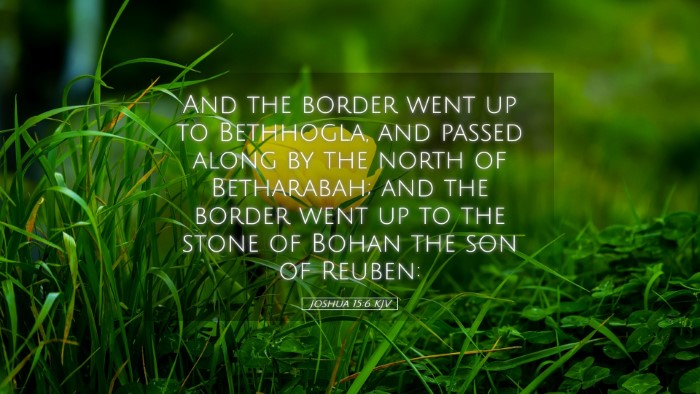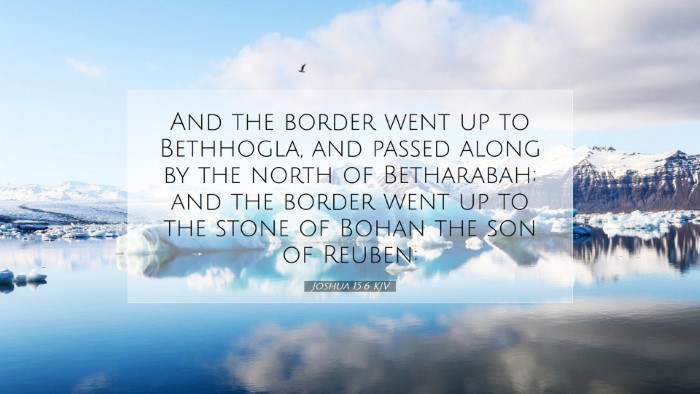Commentary on Joshua 15:6
Joshua 15:6 states: "And the border went up to Beth-hoglah, and passed along by the north of Beth-arabah; and the border went up to the stone of Bohan the son of Reuben." This verse provides a geographical delineation of the borders of the tribe of Judah. The specific details of these boundaries are rich in meaning and context.
Contextual Background
This chapter describes the division of the Promised Land among the tribes of Israel, following their conquest. Judah, being the most prominent tribe, receives a substantial portion of land. The designation of borders signifies both physical territory and a spiritual acknowledgement of God’s promise to His people.
Geographical Significance
The mention of Beth-hoglah and Beth-arabah illustrates the geographic prominence of Judah’s inheritance. These places were situated near the Dead Sea region which was historically significant for its unique geographical features.
- Beth-hoglah: Likely a place offering lushness and fertility, representing the blessings of God on the land.
- Beth-arabah: Situated near the Jordan valley, suggesting a critical strategic location also linked to the River Jordan.
Insights from Commentaries
Matthew Henry
Matthew Henry emphasizes the importance of the land distribution process not just as a practical administrative task but as a divine act of fulfillment of God’s promises. He notes that the specific reference to towns and boundaries reminds the Israelites of their heritage and God’s providence over their lives. The mention of the stone of Bohan highlights the personal stories woven into the land.
Albert Barnes
Albert Barnes elaborates that the identification of borders serves as a reminder of the heritage of the Reubenites. He proposes that the description of these geographical markers also reflects the unity amongst the tribes of Israel. The "stone of Bohan" serves as a historical landmark providing continuity and remembrance of their ancestry.
Adam Clarke
Adam Clarke offers an analysis of the cultural and historical implications of the borders. His commentary indicates that Joshua’s precise delineations served as a call for the people to recognize their responsibilities toward the land and towards each other. The land was not merely a possession but also a testament to the covenant relationship between God and Israel.
Theological Implications
The geographical details found in Joshua 15:6 hold profound theological significance:
- Covenant Fulfillment: The distribution of land illustrates God’s faithfulness to His covenant with Israel.
- Identity and Heritage: The descriptions serve as anchors for the tribes, reminding them of their lineage and God’s past interventions.
- Sacred Spaces: The land itself is imbued with holiness and serves as a physical reminder of God’s presence among His people.
Application for Today
For pastors and theologians, this passage offers rich insights into how territory and promise interact in our spiritual lives. Reflecting on the land divided among the tribes, leaders can draw parallels to how God gives us stewardship over our lives and communities:
- Stewardship: Just as each tribe was to take care of their allotted land, Christians are called to steward their gifts and calling effectively.
- Community: The shared identity among tribes emphasizes the importance of unity in the body of Christ.
- God’s Providence: A reminder that, like Israel, we are part of a larger narrative of redemption that stretches through time.
Conclusion
Joshua 15:6 stands as a significant verse that not only outlines geography but also theology and community. As we explore such passages, we find layers of meaning that enrich our understanding of God’s faithfulness, the importance of belonging, and our own responsibilities as stewards of His promises.


